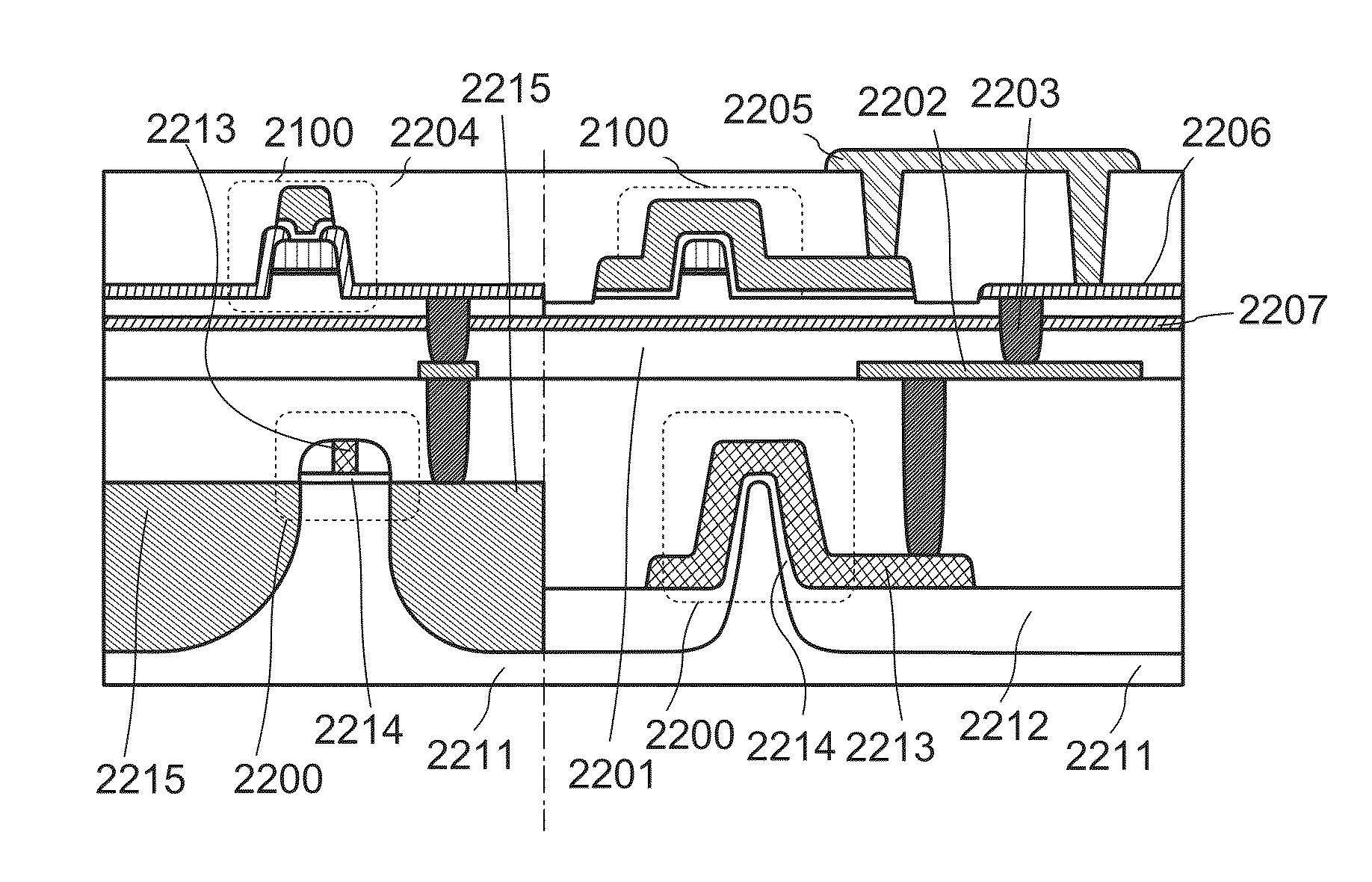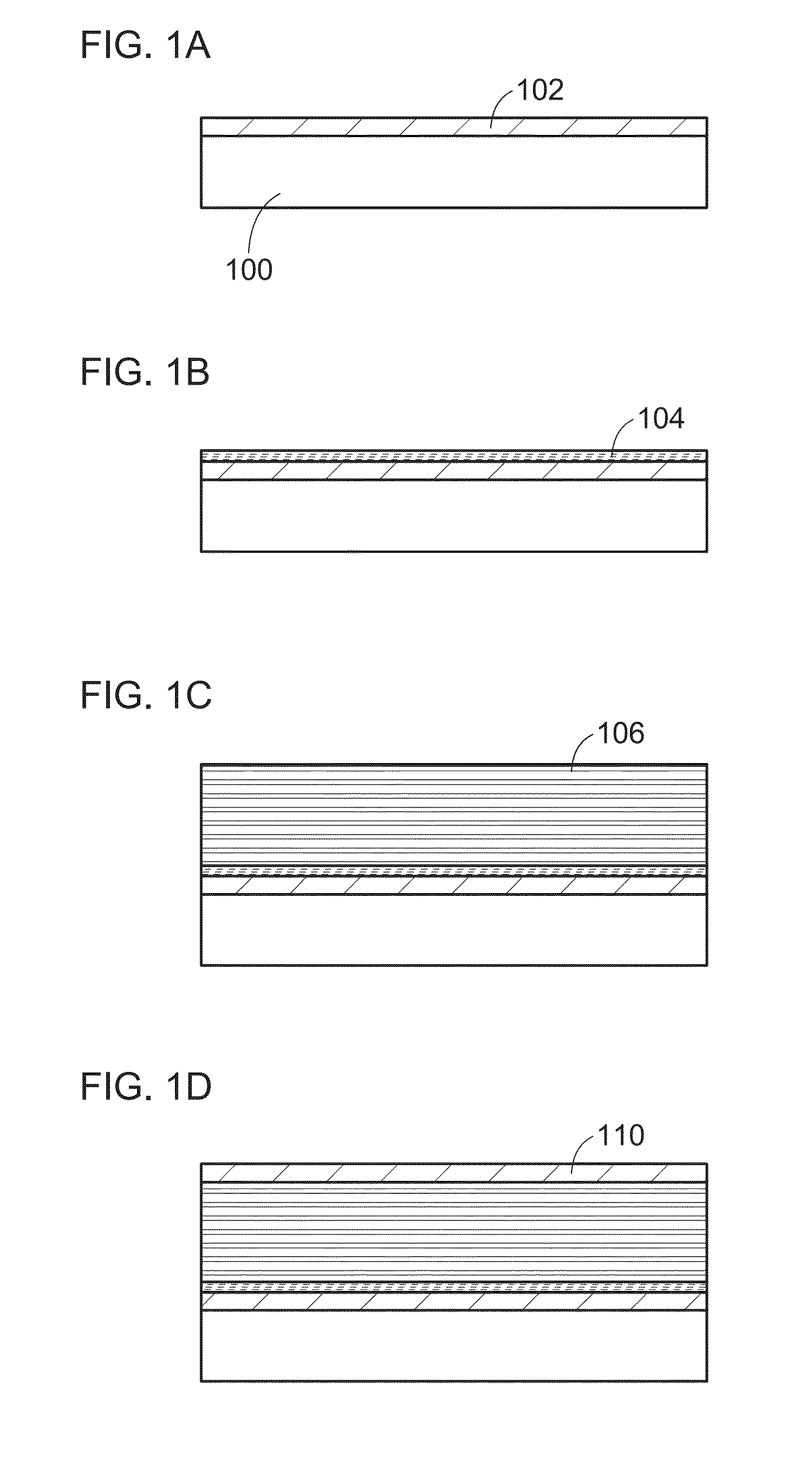Method for manufacturing semiconductor device
- Summary
- Abstract
- Description
- Claims
- Application Information
AI Technical Summary
Benefits of technology
Problems solved by technology
Method used
Image
Examples
embodiment 1
[0056]In this embodiment, a method of forming an oxide semiconductor layer that can be used in a semiconductor device of one embodiment of the present invention will be described with reference to drawings.
[0057]In one embodiment of the present invention, a first oxide semiconductor layer is formed over a substrate by a sputtering method, and a second oxide semiconductor layer is formed by epitaxial growth using the first oxide semiconductor layer as a seed crystal. Here, a thermal chemical vapor deposition (thermal CVD) method is employed for the formation of the second oxide semiconductor layer. The thermal CVD method is different from a plasma CVD method by which a source gas of a main component of a film is decomposed by plasma. By the thermal CVD method, a source gas is decomposed by heating over a heated substrate; thus, in the second oxide semiconductor layer formed by the thermal CVD method, plasma damage is prevented and the number of defects is reduced. For example, in the...
embodiment 2
[0122]In this embodiment, described will be specific examples of a manufacturing apparatus with which an oxide semiconductor layer and the like of one embodiment of the present invention can be formed.
[0123]A manufacturing apparatus illustrated in FIG. 3A includes at least a load chamber 302, a transfer chamber 310, a pretreatment chamber 303, a treatment chamber 304 which is a deposition chamber using a sputtering method, a treatment chamber 331 which is a deposition chamber using a thermal CVD method, and an unload chamber 306. With the manufacturing apparatus illustrated in FIG. 3A, films can be formed successively without being exposed to the air. Therefore, in the case where a stacked structure is formed, an impurity can be prevented from entering a film or an interface between films. Note that in order to prevent, for example, attachment of moisture to inner walls of chambers (including a load chamber, a treatment chamber, a transfer chamber, a deposition chamber, and an unloa...
embodiment 3
[0138]In this embodiment, the structure of a transistor of one embodiment of the present invention having the stacked structure described in Embodiment 1 will be described.
[0139]FIGS. 4A and 4B are a plan view and a cross-sectional view illustrating a transistor 450 of one embodiment of the present invention. FIG. 4A is a plan view and FIG. 4B is a cross-sectional view taken along dashed-dotted line A1-A2 and dashed-dotted line A3-A4 in FIG. 4A. Note that for simplification of the drawing, some components are not illustrated in the plan view in FIG. 4A.
[0140]The transistor 450 illustrated in FIGS. 4A and 4B includes an insulating layer 402 having a projecting portion over a substrate 400; a first oxide semiconductor layer 404 and a second oxide semiconductor layer 406 over the projecting portion of the insulating layer 402; a source electrode layer 408a and a drain electrode layer 408b which are in contact with side surfaces of the first oxide semiconductor layer 404 and a top surfa...
PUM
 Login to View More
Login to View More Abstract
Description
Claims
Application Information
 Login to View More
Login to View More - R&D
- Intellectual Property
- Life Sciences
- Materials
- Tech Scout
- Unparalleled Data Quality
- Higher Quality Content
- 60% Fewer Hallucinations
Browse by: Latest US Patents, China's latest patents, Technical Efficacy Thesaurus, Application Domain, Technology Topic, Popular Technical Reports.
© 2025 PatSnap. All rights reserved.Legal|Privacy policy|Modern Slavery Act Transparency Statement|Sitemap|About US| Contact US: help@patsnap.com



